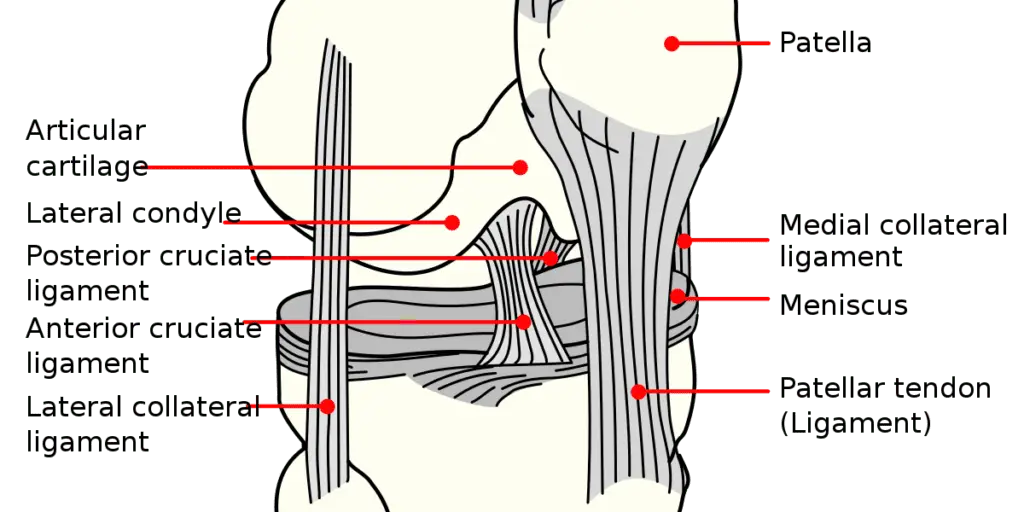Anterior Cruciate Ligament Tear or ACL Tear

What is an ACL Tear?
Athletes who participate in high demand sports such as skiing, soccer, football, and basketball are more likely to injure their anterior cruciate ligaments. This is known as an anterior cruciate ligament tear or ACL tear. According to the American Academy of Orthopaedic Surgeons, “in the United States, around 200,000 ACL injuries occur each year.” Research also shows that the mean age of patients remains 29 years old, however, patients older than 40 and younger than 14 years old have seen a 200% increase in ACL tear surgery. This reflects the activity level and expectations of older and younger athletes. In most cases, ACL injuries can be treated successfully, allowing patients to return to an active lifestyle.Understanding Your ACL and ACL Tears
What is the ACL?
Your ACL is one of the four major ligaments in your knee joint. It plays a critical role in stabilizing your knee and preventing the shinbone from sliding forward excessively. ACL tears can occur with sudden changes in direction, pivoting movements, landing from a jump incorrectly, or direct impact to the knee, which is why they are common sports injuries. The knee is the largest and most complex joint in the human body, essential for walking, running, and other fundamental movements.The femur, tibia, and patella are the bones that form the knee joint, while cartilage enables gliding movement and menisci act as shock absorbers and stabilize the joint. The tendons connect the bones and muscles. The four ligaments in the knee are:- Anterior cruciate ligament (ACL): Prevents the shinbone from sliding forward excessively.
- Posterior cruciate ligament (PCL): Prevents the shinbone from moving backward excessively.
- Medial collateral ligament (MCL): Stabilizes the inner side of the knee and prevents outward bowing.
- Lateral collateral ligament (LCL): Stabilizes the outer side of the knee and prevents inward bowing.
How and Why Do ACL Tears Happen?
When the ACL tears, it is typically quite traumatic, necessitating a stop to the game or a ski patrol ride to the base of the mountain. You may feel a pop with acute pain. Then you might feel unstable, like you cannot bear weight, followed by swelling. You initially treat this injury with physical therapy, rest, and ice. You can also injure your ACL during a twisting non-contact event. Or, it may happen secondary to a contact injury where the knee is hit on the lateral or posterior side. Many ACL injuries occur in cutting sports such as basketball, soccer, and lacrosse, as well as skiing. ACL tears can be classified into three grades based on the severity of the damage:- Grade 1: A mild tear with some stretching of the ligament, still providing some stability.
- Grade 2: A partial tear with significant instability and decreased function.
- Grade 3: A complete tear where the ligament is fully ruptured, causing severe instability and inability to bear weight.
Symptoms of an ACL Tear
You might hear a popping or tearing sound at the time of the injury, especially during a sudden change in direction or landing from a jump. Sudden and intense pain in the knee joint is another common symptom, often described as a “stabbing” or “tearing” sensation. The knee joint will frequently swell significantly in the first few hours after the injury, which may cause a feeling of tightness or pressure. In addition, you may have difficulty putting weight on the injured leg and feel like your knee is buckling. You may have difficulty bending or straightening the knee fully due to pain and joint instability, and it may be painful to touch or apply pressure to the knee, especially at the joint. Some patients may experience bruising around the knee within a few days of the injury.Diagnosing an ACL Tear
Your doctor will discuss your symptoms, how the injury occurred, and previous knee problems, performing an examination of the knee to check for swelling, tenderness, range of motion, and instability. Specific tests to assess ACL functionality include:- Lachman test: checks for excessive forward movement of the shinbone relative to the thigh bone.
- Pivot shift test: assesses for abnormal looseness of the knee when pivoting.
- Anterior drawer test: checks for excessive forward movement of the tibia when the knee is bent.
